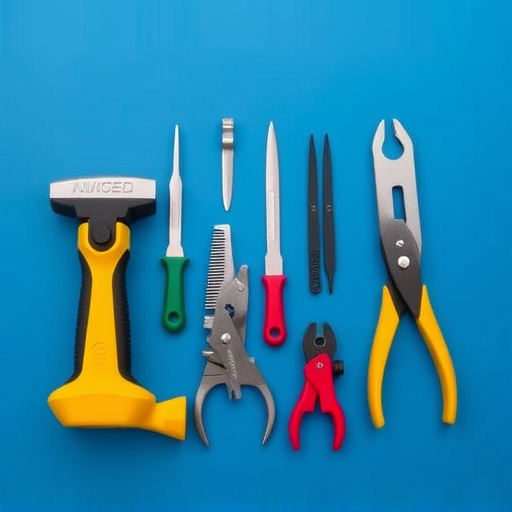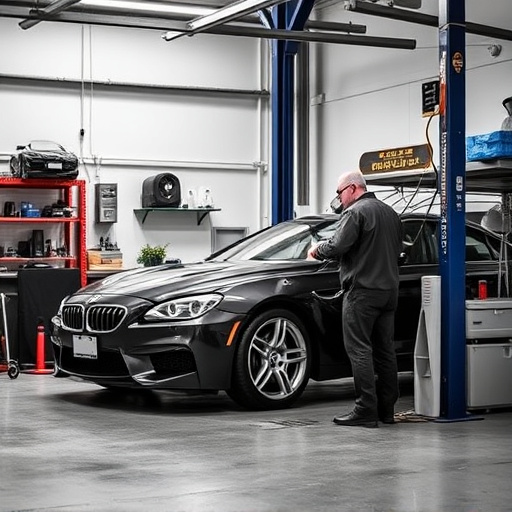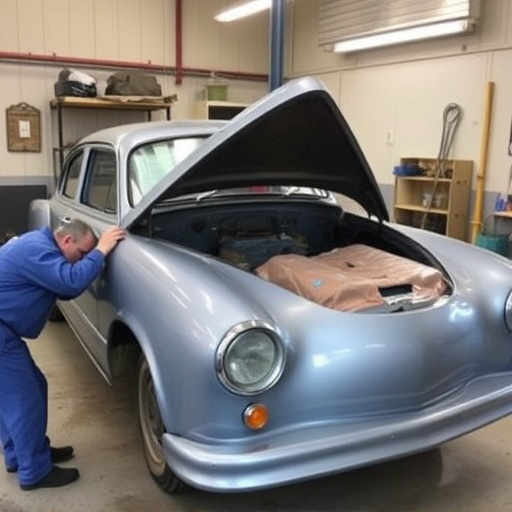Direct Repair Programs (DRPs) streamline vehicle repair by connecting insurance companies, manufacturers, and qualified auto body shops. These programs offer car owners convenience, competitive rates, and transparent pricing while providing shops with guaranteed work and a steady business stream. To join, facilities must meet high-quality, industry standard criteria, especially in specialized areas like paint repairs. Success requires enrolling in approved programs, training through workshops and courses, mastering techniques on dummy cars or damaged vehicles, continuously assessing performance, and committing to learning.
Discover the world of direct repair programs (DRPs) and unlock a rewarding path for your career or business. This comprehensive guide is designed for complete beginners, offering a step-by-step journey through DRP basics and benefits, eligibility requirements, and practical strategies for success. Learn how to navigate this growing industry, ensuring you provide efficient, cost-effective repairs while enhancing customer satisfaction. Get ready to thrive in the world of direct repair!
- Understanding Direct Repair Programs: Basics and Benefits
- Getting Started: Eligibility Criteria for DRP Participation
- Navigating the Process: Steps to Succeed in Direct Repair
Understanding Direct Repair Programs: Basics and Benefits
Direct Repair Programs (DRPs) are designed to streamline the process of vehicle repair, offering a convenient and often cost-effective solution for both car owners and auto body shops. At its core, a DRP is a partnership between an insurance company or automotive manufacturer and a network of qualified repair facilities. This collaboration ensures that when a customer experiences damage to their vehicle, they have a pre-approved list of trusted repair centers to choose from.
The benefits of direct repair programs are multifaceted. For car owners, it provides peace of mind knowing that repairs will be handled efficiently and at competitive rates. Qualified auto body shops benefit from guaranteed work and a steady stream of business. Moreover, DRPs foster transparency in pricing and service, ensuring customers receive high-quality vehicle restoration services without hidden costs or unnecessary procedures, making direct repair programs a valuable resource in the automotive industry for both parties involved.
Getting Started: Eligibility Criteria for DRP Participation
Starting your journey with a Direct Repair Program (DRP) is an exciting step, but it’s important to understand who can participate and benefit from these programs. DRPs are designed to facilitate collaborations between insurance providers, repair facilities, and vehicle owners, streamlining the process for automotive restoration and body shop services.
To be eligible for a DRP, your facility must meet specific criteria. This often includes having a proven track record of high-quality work, adhering to industry standards, and maintaining efficient processes. Vehicle paint repair specialists are in high demand within these programs as they play a crucial role in ensuring vehicles return to their pre-incident condition. The benefits for participants include increased business stability through guaranteed work and direct billing, as well as the opportunity to build a strong reputation within the automotive industry by providing exceptional service.
Navigating the Process: Steps to Succeed in Direct Repair
Navigating the Process: Steps to Succeed in Direct Repair
The first step in joining a direct repair program is understanding the process. It begins with identifying and enrolling in an approved program that aligns with your needs, whether it’s focusing on car dent repair, hail damage repair, or general car damage repair. Once enrolled, you’ll gain access to training materials and resources specific to the program. These often include workshops, online courses, and hands-on training sessions led by experienced professionals.
As you progress, practice on dummy cars or damaged vehicles to hone your skills in direct repair techniques. This practical experience is crucial for mastering tasks such as painting, body restructuring, and panel replacement. Regularly assess your performance against industry standards and seek feedback from mentors or peers to ensure continuous improvement. Remember, success in a direct repair program requires dedication, patience, and a commitment to learning.
Direct repair programs (DRPs) offer a straightforward path for individuals to learn practical skills and gain valuable experience in auto repair. By understanding the basics, meeting eligibility criteria, and following structured steps, beginners can successfully navigate this rewarding journey. Embracing DRPs not only fosters personal growth but also contributes to a skilled workforce, ensuring efficient vehicle maintenance and repair for years to come.











